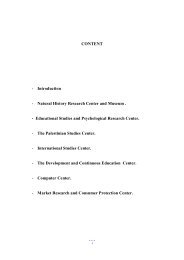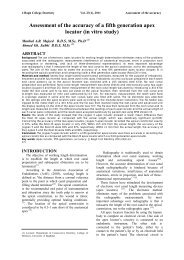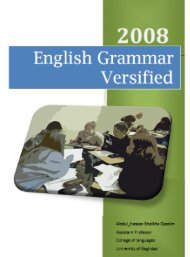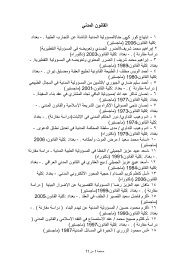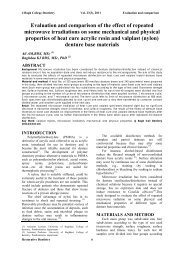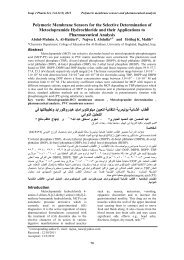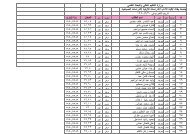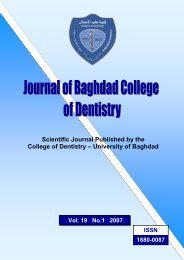Vol 21 No. 1
Vol 21 No. 1
Vol 21 No. 1
You also want an ePaper? Increase the reach of your titles
YUMPU automatically turns print PDFs into web optimized ePapers that Google loves.
J Bagh College Dentistry <strong>Vol</strong>.<strong>21</strong>(1), 2009 Microleakage of Class II….<br />
Microleakage of Class II composite using different etching<br />
techniques<br />
Zainab M. Abdul-Ameer B.D.S., M.Sc. (1)<br />
ABSTRACT<br />
Background: Microleakage in the gingival floor of class II composite restorations can compromise the marginal<br />
adaptation of the filling material to the cavity edges. The aim of this study was to evaluate the effect of different<br />
etching techniques on Microleakage of class II Composite filling.<br />
Materials and methods: Sixty extracted caries-free human premolars were randomly divided into six groups<br />
according to etching technique. In group A and B the dentin of the cavities were etched with 35% phosphoric acid<br />
gel, in group C and D the dentin of the cavities were irradiated using a 320 μm Nd: YAG laser beam, in group E and F<br />
the dentin surfaces were initially treated with the laser and then etched as in group A and B with 35% phosphoric<br />
acid. Proximal class II cavities were prepared in all samples with the gingival floor one millimeter below the CEJ.<br />
Cavities were restored according to research protocol. The samples were subjected to 2500 thermal cycles (5-55oC),<br />
immersed in 0.5% basic fuchsine solution, embedded in epoxy resin and cut centrally. Microleakage was scored and<br />
collected data were statistically analyzed using one way analysis of variance.<br />
Results: More microleakage was detected in group C (p0.05). Using the incremental technique significantly<br />
decreased microleakage (P



